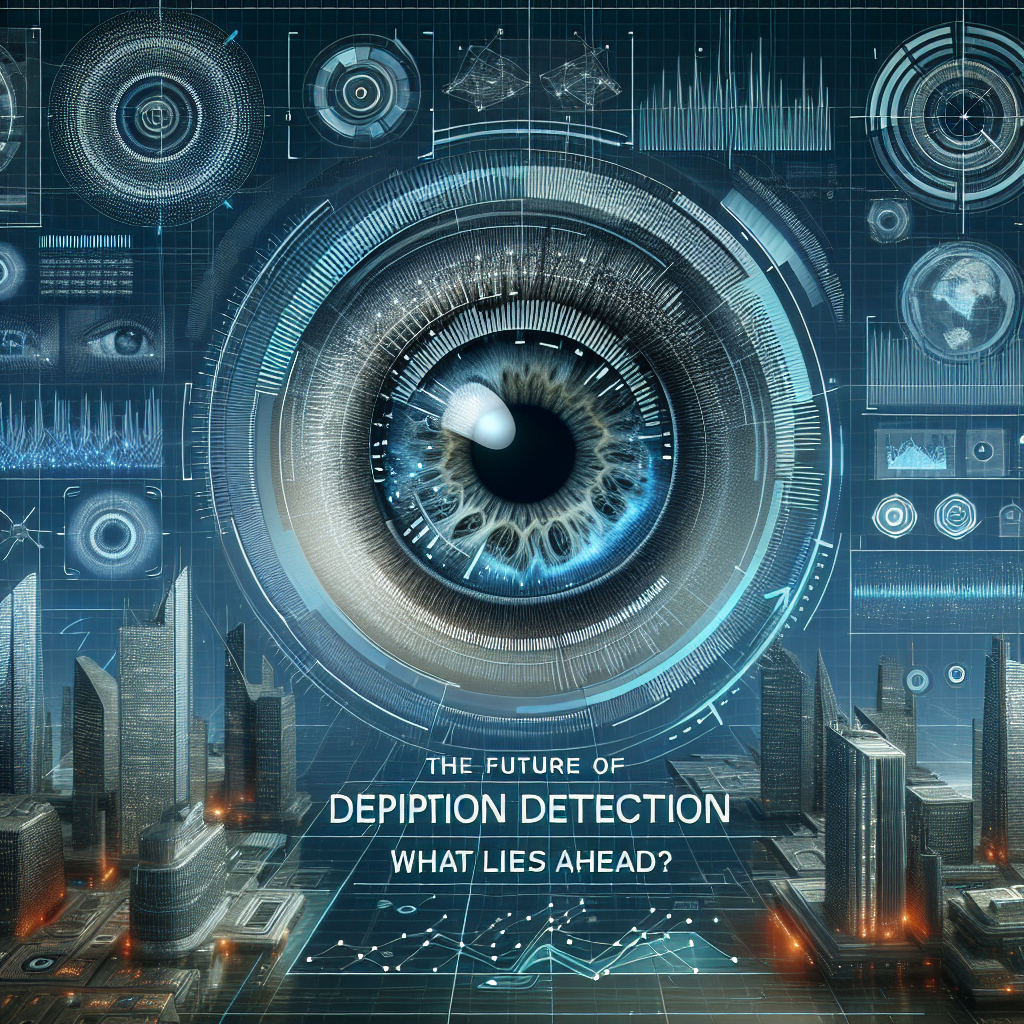
Introduction
In a world rife with misinformation, deceit, and cunning manipulation, the quest for truth has never been more paramount. The Future of Deception Detection: What Lies Ahead? is a crucial conversation—one that not only explores emerging technologies but also fundamentally shapes justice, security, and personal relationships. Deception detection is evolving, driven by advancements in artificial intelligence, neuroscience, and behavioral analysis. As the boundaries between truth and lies blur, understanding how to effectively identify deception poses both challenges and opportunities for society at large.
The Evolution of Deception Detection: A Historical Overview
Understanding the future requires examining the past. Deception detection has ancient roots, from the polygraphs used in the early 20th century to contemporary techniques that delve deeper into human psychology.
The Polygraph Era
The polygraph, first developed in the 1920s, measures physiological responses—heart rate, blood pressure, and respiration—in an attempt to assess truthfulness. While still employed today, its accuracy has been widely criticized.
Behavioral Analysis
The transition from mechanical devices to observing human behavior marked a significant shift. Body language and micro-expressions gained prominence as tools for deception detection. Experts like Paul Ekman highlighted how subtle facial expressions can reveal concealed emotions, paving the way toward a more nuanced understanding of human interactions.
The Dawn of Advanced Technologies
The rise of AI and machine learning has revolutionized deception detection. Algorithms can analyze vast datasets, identifying patterns and anomalies that may signal deceit. This evolution raises the question: What lies ahead in the realm of these technologies?
The Role of Artificial Intelligence in Deception Detection
Artificial Intelligence (AI) is at the forefront of deception detection research. By harnessing machine learning, AI systems can evaluate behavioral cues with unprecedented accuracy.
Case Study: IBM’s Watson for Forensics
IBM’s Watson has been involved in forensic investigations, where it analyzes data from criminal cases. It detects deceitful patterns in witness statements and provides insights that law enforcement can use to refine their investigative strategies.
Relevance to the Topic
This case exemplifies how AI can enhance the future of deception detection by offering precise, quantitative assessments of human behavior.
The Application of Natural Language Processing
Natural Language Processing (NLP) can further bolster deception detection. By analyzing the language used in textual communication, AI can identify inconsistencies or emotional cues that suggest deceit.
Case Study: Red Flags in Online Conversations
Research conducted by academics has shown that NLP algorithms can effectively flag deceptive conversations based on word choice, grammar, and emotional tone.
Analysis
This highlights how advancements in AI and NLP are instrumental in the future of deception detection, enabling timely interventions and promoting awareness of online communications.
Neurotechnology: The Intersection of Mind and Machine
Looking ahead, neurotechnology promises to reshape deception detection profoundly. Neuroimaging, such as fMRI (Functional Magnetic Resonance Imaging), allows researchers to visualize brain activity during deceptive behavior.
Case Study: The Neuroscience of Lying
Studies have shown that when individuals lie, certain areas of their brain exhibit heightened activity. Researchers are now exploring whether these patterns can be reliably used for deception detection.
Significance
Integrating neurotechnology into the future of deception detection may offer a more profound understanding of human motives and intentions, paving the way for more ethical applications.
Ethical Considerations in Deception Detection Technologies
As we venture into the future of deception detection, ethical considerations cannot be ignored. The potential for misuse of technology raises essential questions about privacy, consent, and accuracy.
The Moral Dilemma of Mind Reading
Imagine a future where neurotechnology can "read" people’s thoughts. While this possibility is exciting, it prompts ethical concerns about the right to privacy and the potential for abuse.
Ensuring Accuracy and Preventing Misuse
Developing guidelines and standards for deception detection technologies is crucial to ensuring that these tools are used responsibly. Collaboration between technologists, ethicists, and lawmakers will be vital.
The Future Workplace: A New Era of Trust and Betrayal
The Future of Deception Detection: What Lies Ahead? will be profoundly shaped by its influence on workplace dynamics. Organizations are increasingly investing in tools that identify deception among employees or in recruitment processes.
Case Study: AI in Recruiting
Some companies are incorporating AI-driven assessments during interviews to detect discrepancies in candidates’ responses. These techniques aim to foster transparency and minimize hiring mistakes.
Implications
As workplaces evolve, balancing trust and skepticism will become increasingly complicated, necessitating sophisticated deception detection strategies.
The Social Landscape: Relationships, Trust, and Deception
Deception detection will also impact our social relationships. People’s increasing reliance on digital communication creates unique challenges in interpersonal trust.
Navigating Online Friendships
In the age of social media, how can we gauge authenticity in online interactions? Emerging technologies will enable us to discern credibility, yet they may also foster skepticism in genuine relationships.
The Challenge of Trolling and Misinformation
The proliferation of fake news and trolling on digital platforms amplifies the need for effective deception detection. Tools that assess credibility in online content will become essential in fostering informed communities.
Conclusion: Navigating a World of Uncertainty
The Future of Deception Detection: What Lies Ahead? is both thrilling and daunting. As technology becomes more sophisticated, our methods for decoding human behavior will need to evolve. From AI and neuroscience to ethical implications and social changes, the landscape is rich with opportunity and challenge.
As we adapt to a world filled with complexities, gaining insight into deception detection will empower individuals and organizations to thrive in uncertain environments. The future lies not just in the tools but in our collective responsibility to use them for justice, understanding, and integrity.
FAQs
1. What are the most common methods of deception detection currently in use?
Common methods include polygraph testing, behavioral analysis, and newer AI-driven technologies such as NLP.
2. How accurate are AI systems in detecting deception?
While AI systems can offer improved accuracy compared to traditional methods, their effectiveness depends on the quality of the underlying algorithms and data.
3. Are there ethical concerns related to deception detection technologies?
Yes, privacy, consent, and potential misuse of these technologies are significant ethical considerations that need to be addressed.
4. Can deception detection technologies be used in personal relationships?
While they can provide insights, reliance on such tools in personal relationships may undermine trust and authenticity.
5. What does the future hold for deception detection technologies?
The future will likely see advancements in AI, neurotechnology, and ethical frameworks to ensure the responsible use of deception detection tools.
The Future of Deception Detection: What Lies Ahead? is a topic that requires our attention, curiosity, and critical thought. Through awareness and knowledge, we can navigate the evolving landscape of truth and deception in an ever-complex world.

















